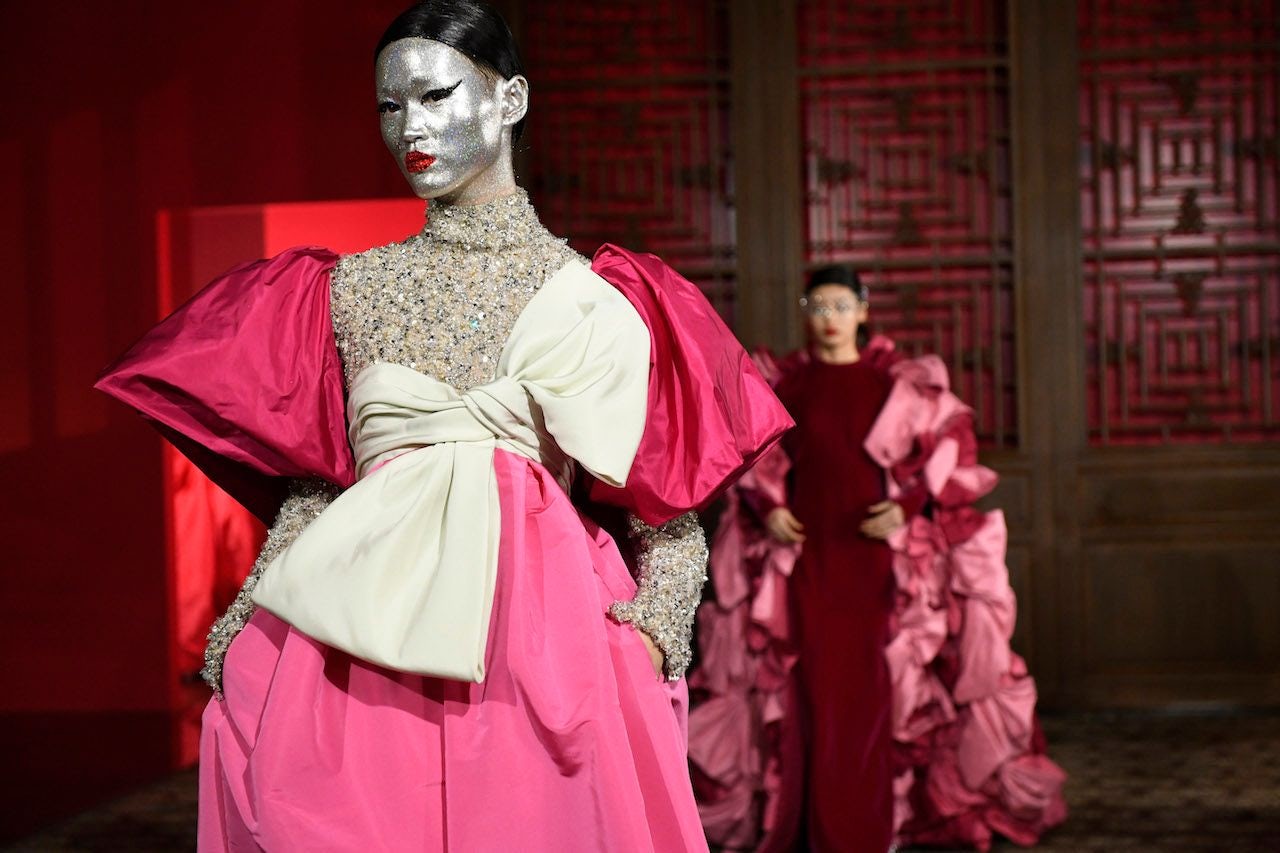- The observational documentary format adopted by the show creates a surveillance-style that is one of the most popular formats among reality shows in China. Opening show figures recorded 19.8 million viewers.
- Tokyo’s hip Harajuku district, a renowned hub of youth culture and street fashion, is the show’s location which goes to illustrate the creators desire to export Chinese sportswear by redefining the role of China in pop culture trends and influence.
- Though not without its critics, the first show was a success and discussions about Kris Wu indicate the show is profoundly dependent on the idol economy - one which cannot be underestimated.
The first episode of Fourtry topped the hottest reality show chart on Weibo, reaching a staggering 19.8 million viewers. It follows the day-to-day running of a streetwear pop-up in Tokyo, “Fourtry,” by celebrities like Kris Wu - the entertaining host - and his partners, namely Angelababy, Wilber Pan, Jinmai Zhao, and Fox.
Powered by the same production team behind The Rap of China - iQiyi - it features similar celebrities to its insanely popular predecessor. Since the first season’s debut in 2017, The Rap of China, a rap battle reality TV show, brought underground street culture to the mainstream. Arguably high-end streetwear labels such as Ambush, Heron Preston and Raf Simons, as well as, the home-grown streetwear brands worn by Kris Wu, a.k.a. “China’s King of Streetwear,” were the real winners of the show.
Back then, exposure to these brands broadened Chinese millennials and Gen Zers’ knowledge of streetwear beyond the likes of Supreme; it made luxury streetwear cool among younger generations in China. By producing The Rap of China, this online entertainment production and platform giant has proven its deep understanding of Chinese youth culture by broadcasting hip hop culture. Now, can it do the same with Fourtry?
The show focuses on Fourtry, a debut brand alongside other Chinese homegrown streetwear designs, while selections from other luxury labels are also featured. AI technology allows audiences to simultaneously purchase identical clothing as chosen by the celebrities. An offline boutique opened in Shanghai in mid-December to boost the show and streetwear-savvy youths lined up for the first drop-off; limited branded T-shirts sold-out within the hour.
As a show, Fourtry works by documenting how the host, Kris Wu, and his partners, select products, merchandise, and manage the store. The observational documentary format adopts a surveillance-style is one of the most popular formats among reality shows in China. It is favored by audiences as they are offered the opportunity to sneak a look at celebrities in “real” life, and it presents inclusive marketing and branding opportunities for various brands in a seemingly casual manner.
The show is not the first fashion-themed reality show in China. China’s national broadcaster CCTV and e-commerce giant JD.com jointly produced Fashion Master which showcased young designers’ attempts to connect Chinese aesthetics and the global fashion industry. With a fresh take, big production values and fashion insiders like Editorial Director of Vogue China, Zhang Yu, and well-known Chinese couturier, Guo Pei, Fashion Master should be a great platform for luxury brands to reach their Chinese consumers. However, it failed to resonate with younger audiences and netizens responded negatively.
Targeting Chinese digital-savvy millennials and Gen Zers specifically, Fourtry tells the story of a fashion boutique that integrates streetwear culture, current trends, and brand stories with celebrities' daily routines. In recent years, Chinese domestic streetwear has gained awareness due to the resurgence of a “national tide” (guochao 国潮) or increased “cultural confidence.” Chinese brands like Li-Ning are considered to embed the notion of national pride in their clothing. Local media attribute the rise of homegrown labels to domestic consumers that are now willing to pay for a badge of patriotism.
The concept behind the show explores the nuance between representing domestic Chinese streetwear and the definition of pop culture. Instead of purely peddling domestic designs, Fourtry aims to showcase “a brand-new perspective on the diversity and inclusiveness of cultural trends” and to “redefine the role of the Chinese pop culture trends and influence.” In fact, the show’s vision speaks to a desire to export Chinese designs to global consumers, by location for one; it takes place in Tokyo’s hip Harajuku district, a renowned hub of youth culture and street fashion. As Che Che, the show’s director, explains, “Tokyo is the center of Asian fashion trends. Visitors have strict standards and critique the boutiques objectively and have no idea about these Chinese superstars.”
The first episode of Fourtry received generally positive reactions. According to Danmu, (a popular comment-sharing system in which viewers can put comments on top of videos), appreciation for the show came mostly from fans of the celebrities. Thus, the overwhelming discussions about Kris Wu indicate the show is profoundly dependent on the idol economy. Indeed, the power of the idol economy cannot be underestimated — Fourtry hints at a bigger picture than merely a reality show.
According to shoppers’ Weibo posts which shared their excitement of putting in a preorder of the HUILI x Fourtry collab sneakers, their motivation for snapping up the sneakers was out of support for Wu. Indeed Fourtry is clearly driving sales of domestic streetwear brands.
However, over the last month of weekly show updates, negative voices emerged on WeChat subscription accounts and other popular social media platforms like Zhihu and Weibo; they questioned and criticized the shows target audience, with one viewer asking: “How many hipsters are following Fourtry?”
Undoubtedly, the monetization of the show is a successful business model: it moves traffic from viewing to purchasing. By reimaging a shopping scenario - in which audiences can place an order while watching the show — Fourtry advances digital sales channels supported by local e-commerce, Aomygod and luxury fashion retail platform, Farfetch.
Can this show translate into a bone fide movement ala “The Rap of China?” Only time will tell. But a more crucial issue hinges on whether the desire for domestic streetwear evolves into spend. Chinese streetwear brands alone are poised to get close enough to domestic youth culture to leverage this advantage. Although the onscreen conversion is currently cashable, the growth of guochao is yet to be measured.


